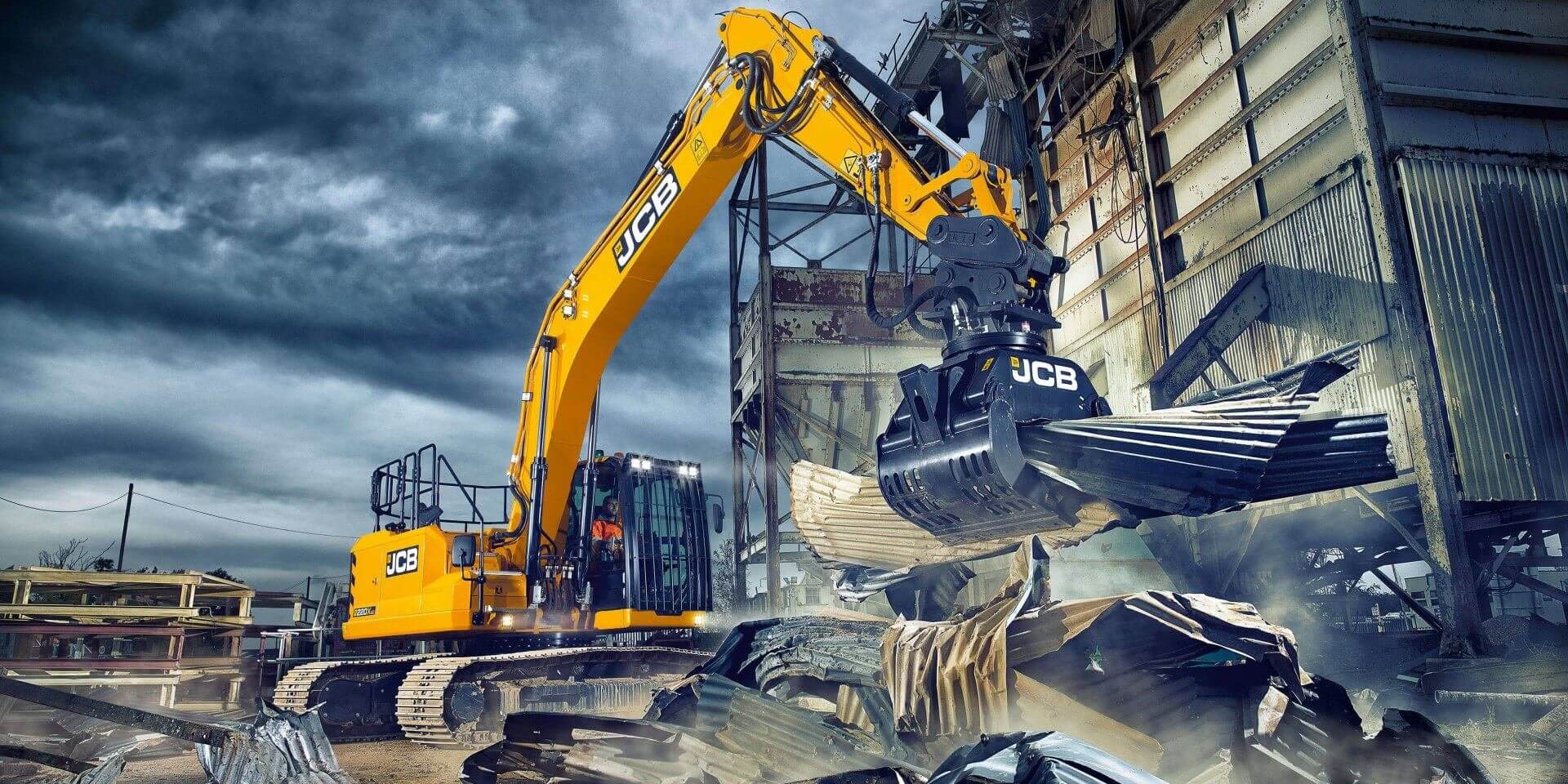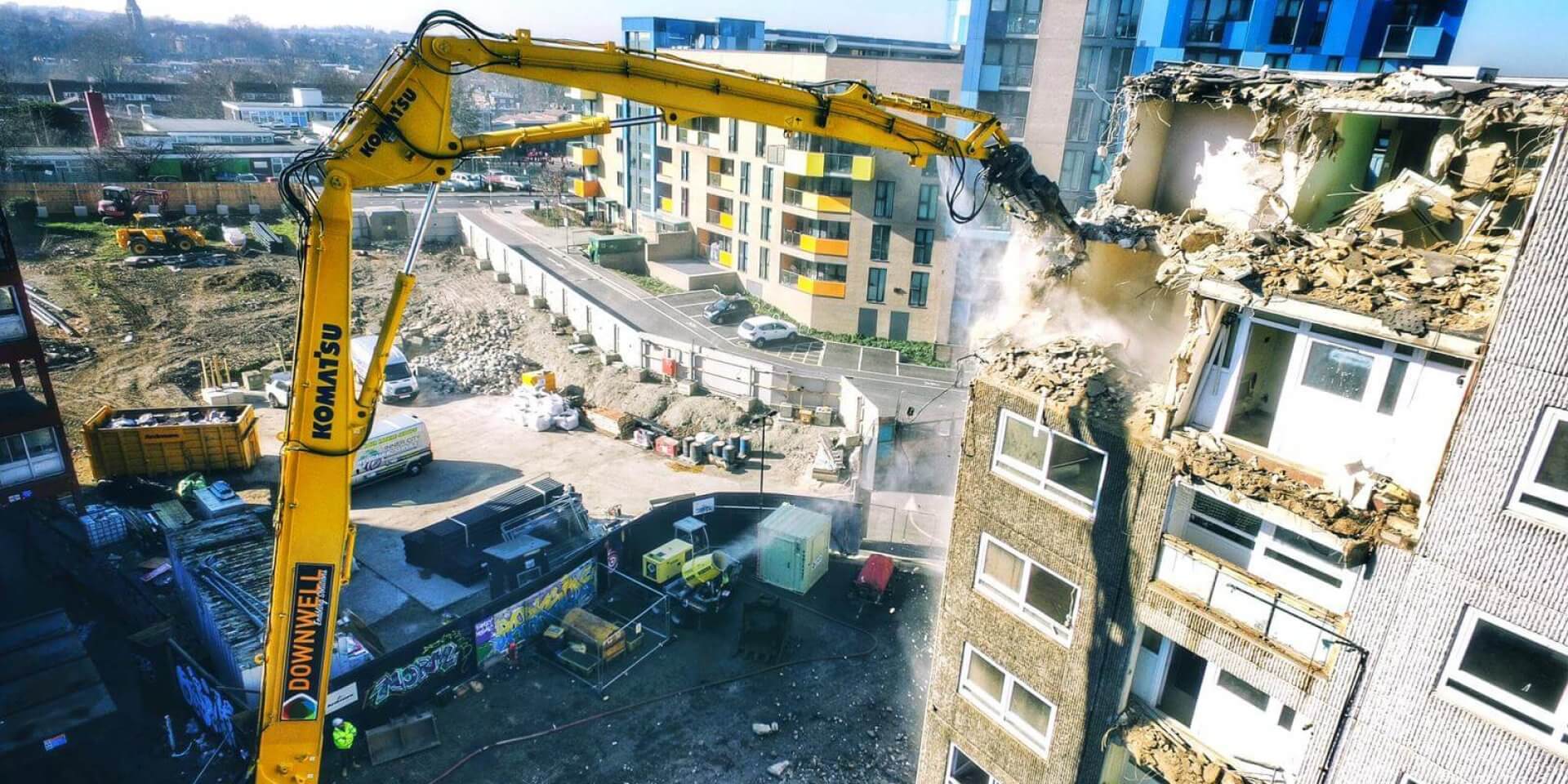Was environmental message lost on the visitors that flocked to Vegas last week?
 Caterpillar is the world’s biggest and America’s best known manufacturer of construction and demolition equipment; and where Caterpillar leads, the industry tends to follow. So when the company’s CEO Doug Oberhelman declared at ConExpo that “The Next Generation Starts Here”, he wasn’t just showcasing the Caterpillar sales message; he was setting the agenda for an entire industry.
Caterpillar is the world’s biggest and America’s best known manufacturer of construction and demolition equipment; and where Caterpillar leads, the industry tends to follow. So when the company’s CEO Doug Oberhelman declared at ConExpo that “The Next Generation Starts Here”, he wasn’t just showcasing the Caterpillar sales message; he was setting the agenda for an entire industry.
And Caterpillar wasn’t just talking the talk; it was walking the walk too. One part of the company’s display was designed to be reused and recycled immediately after the show. And in its main display area, many of its 200+ representatives were wielding Apple iPads, wirelessly taking orders and confirming machine availability in the middle of a packed exhibition hall.
Wandering about the Las Vegas Convention Centre, I was struck by the fact that, product wise, there was nothing really new. Sure, there were some upgraded, updated and uprated machines on show. But anyone that left Sin City believing they had seen a revolutionary product has almost certainly been living in a cave for the past 10 years or more.
But if there was an encompassing theme to the show, it was – as Caterpillar rightly said – the harnessing of technology and the protection of the environment.
From a pure technology standpoint, this was by far the most advanced, forward-thinking and “wired” show I have ever attended in my 25+ years in the construction business. The organisers had developed a free iPhone app containing not just a floor plan and map but a detailed scheduler to keep visitors informed of what was going on, where and when. This was further linked to a social networking system that allowed visitors to share their experiences and to let the friends, colleagues and contacts know where they were, what they’d seen. And, on many stands, the age-old convention tradition of business card exchanges had been largely replaced by a more efficient, paperless electronic alternative. There is no question that ConExpo has set the technological benchmark for future exhibitions
For those of us that have been around for long enough to remember when operator’s cabs were considered an optional extra, the replacement of business cards by iPhones was matched in its new-fangledness by the marketing message driving the sales of most of the equipment on display.
There was a time, in the not too distant past, when equipment was measured in terms of horsepower, torque or the amount of “grunt” it developed. Today’s machines pack more grunt than a Swedish porn movie; but nobody talks about it any more. Power for its own sake has almost become a dirty word; an embarrassing secret like that Justin Bieber song on your MP3 player. Modern equipment is measured on a nominal “muesli scale” that balances the amount of fuel that is put in against the amount of emissions it puts out. The 20 tonne, 200 horsepower excavator of yesteryear has been usurped by a Tier III compliant, biodegradable oil sipping machine that is kind to trees and fluffy bunnies, that does volunteer work at its local homeless shelter, and that probably makes its mother’s eyes leak tears of pure pride.
But this is a tale with a sting in it.
The construction equipment sector, like its fancy-pants cousins in the automotive sector, has invested billions to make equipment that is leaner and greener than the products they replace. They have embraced technologies such as diesel/electric hybrid engines and advanced exhaust filtration systems; they have developed engines clean enough to serve as a dinner plate. Hell, these people have even swapped their business cards for iPhones and Blackberries to help save the rainforests.
But then, through a mix of tradition, received wisdom and a need to keep up with the Joneses, this noble, costly and well-intentioned effort is undermined with a single sweep of the marketing manager’s pen.
Best estimates suggest that ConExpo will have attracted somewhere in the region of 130,000 visitors from locations literally across the globe (my flight from Philadelphia alone contained individuals from the UK, the Netherlands, India, China, Italy and Canada). In addition, the show’s hundreds of stands were each manned (or womanned) by staff that had used a variety of planes, trains and automobiles to get to a city that – perhaps fittingly – stands like a beacon of ostentation and excess in the middle of a barren desert. And because no-one but no-one walks anywhere in Las Vegas unless it’s to the bar or the craps table, every one of those visitors, staff or other associated hanger-on was serviced by a seemingly endless procession of cabs, town cars and limousines, each slurping fuel like a parched camel, each belching emissions like a diner at a Mexican cantina.
This is less carbon footprint and more carbon steel-capped boot stomping down upon the green intentions and environmental ambitions of an entire industry.
There is a lesson to be learned here. As an industry, we have accepted that operator cabs are not an option but a necessity; that clean running engines are of benefit to us all; and that it is possible to attend an exhibition without a tree’s worth of business cards in our back pocket.
Our next challenge is to overcome our need to press flesh and kick tyres (or tracks), and to utilise technology to allow us to conduct business without the need to fly halfway around the world.
Good as ConExpo was – and for all I have said above, it really was VERY good – there has been only one real winner from the show; the oil companies that are eking out the last vestiges of rapidly depleting and finite resources. The big loser is Mother Earth, for precisely the same reasons.
And the sad thing is that – as I write this – I realise that for all my hippy ideals and environmental leanings, I am equally (or even more) culpable. My round-trip clocked up around 14,000 air miles and I took a taxi twice a day every day I was there. But, like all journalists, I contributed nothing to the industry, humanity or the planet other than some words that, with hindsight, I might have done almost as well from the comfort of my own home in the UK.
As much as I enjoyed the show and as much as I love the US (how can you fail to love a nation in which turkey bacon – that’s one meat made to taste like another – is proffered as a viable vegetarian sandwich filling), I would find it hard to justify repeating this trip.





 Not many people trapped under a slab of concrete and an excavator walk away to tell the tale. But just over a month after we reported on an
Not many people trapped under a slab of concrete and an excavator walk away to tell the tale. But just over a month after we reported on an 


